|
The shoemaker - Trinidad and Tobago Newsday written by Valdeen Shears. March 2, 2024
Akanni Kamau was only 15 when he developed a love for craft. He made his first pair of slippers out of cardboard and hunted for scraps outside a shoe factory in St James when he decided to upgrade his product. He was so determined to hone his skills that he did a stint as a shoemaker just to learn the intricacies of how to "build" footwear. Soon the teen would go from cardboard slippers to his first pair of leather sandals, made from the scraps he had gathered. Kamau, now 63, told Business Day that his curious, teenage mind was at that time fixated on African culture and art. The self-taught craftsman said he read avidly on the topics and scored any publication he could get his hands on that offered teachings on craft. With no internet in those days to offer DIY tutorials, he persevered and did all his first creations by trial and error. "It started with just a thought that I could make sandals, beautifully crafted, artistic sandals and slippers. That I could one day see my creation on the feet of my countrymen and women. I lived at Nizam Street, St James at that time and the street behind there, Nepaul Street, had a shoe factory. I would go many days after school and gather scraps, just so I could use them to make more sandals and slippers. I experimented for two years, until I made one that I wore to market my work. It drew compliments and soon enough I was being asked to provide the same and similar designs for others," he recalled. This was all the encouragement he needed to recognise that he had found himself a viable business. The income was slow but sure, he said, so he worked as an air condition technician during the day and would excitedly get home to begin or complete a job for his quickly growing clientèle. Leather craftsman Akanni Kamau said while his creations are based on his own ideas, he is influenced by the wants and needs of his customers. Six years later, after building a customer base, Kamau said he knew he had to go all in and opened his first shop at Patna Street. He stayed there for over 15 years. "You have to truly love creating, satisfying your customers, for you to want to stay in this industry. I knew from the onset that any day job I did would soon take a back burner for my craft. It was no hard decision to leave my job then, my fixed income, my security blanket and branch out on my own doing my craft. I knew it would one day call for my full commitment and that day had reached." Kamau said while the current economy may somewhat negatively impact on the industry's sustainability, the market for craft is limitless and offers diverse opportunities. He firmly believes customers' needs and preference for durability keep the livelihoods of craftsmen and women going. "A satisfied customer is not one who has to return to buy every other month, but one who is loyal because the product bought is durable and lives up to his standards. People who love leather footwear see the sense in buying a sandal or slipper that will last longer than a month or two like most store bought shoes made out of plastic and compressed cardboard," reasoned the craftsman. Kamau is a father of two and a proud grandfather of seven. While none of his children followed in his footsteps, Kamau has passed on his legacy through others by training any youth who showed an interest. He recalled a group of young trainees who would "race each other to finish a project first." He would laugh at their antics, he said, and then sternly correct errors made in their haste to out do the other. Sadly, Kamau said, none of his trainees stuck it out. He said he suspects its because they could not see a clear way to secure a market and became discouraged. "Securing a market is often a deterrent for most creatives. They second guess their gifts, but if the ancestors give you, they will provide the means and opportunities for you to sustain yourself and your livelihood," he stressed. In the late 1980s, Kamau relocated to Clarence Street for five years and then again to De Norbriga Street, Morvant, where he is currently based. The move to Morvant meant he had to secure a new customer base. Some loyal customers followed him to Morvant, while some didn't. This though, did not faze the resilient craftsman, as he soon saw the support of his new community, several of whom wanted customised footwear. From time to time he takes a chance and markets his goods at lower Frederick Street, Port of Spain. Kamau's creations, while based on his own ideas, are very much influenced by what his customers want. So much so, that one customer took a photo of a pair of leather sandals in a popular shoe store in the city and sent it to him via social media. It was with a huge smile that she paid for her customised sandals two weeks later, he said. The artisan said he gets extreme satisfaction matching his creations to the personality of its wearer. Some of his work boasts brightly-coloured splashes, which he said women often gravitate towards. Kamau said he is sure that the versatility of any leather slippers or sandals will more than likely match any outfit in the average person's wardrobe. "My female customers can no doubt find a handbag, an earring, a chain, some fancy top they had been saving for a special occasion, to wear with one of the more decorative slippers or sandals. The lifted ones, with raised heels or wedge sandals are often a big hit for the ladies." It has not been all good times for his near 50-year journey, though. There have been struggles and he wishes that craftsmen and women would voice their need for a space of their own, particularly within the capital city. Some of the sandals made by leather craftsman Akanni Kamau. PHOTO BY ANGELO M MARCELLE
0 Comments
As any typical Trini child my mother believed in certain traditonal practices associated with the advent of a new year. She ensured that all laundry was done and a thorough cleaning of the home be done on New Years Eve followed by burning of incense throughout the house. This was her way of conducting a spiritual cleansing of the home to get rid of negativity and any evil forces.
On New Years Day we were not allowed to sweep the house since she had grown up to believe that you would sweep away the good luck the new year ushered in. Also if you did laundry on New Years Day you will be washing away the life of a family member in the new year. My father on the other hand believed that your wallet must always have money in it when the old year ended. This he said was to l ensure that you will always have money in your wallet throughout the New Year. These are but a view of the superstitious beliefs I remembered growing up. What superstitious beliefs do you remember that is associated with New Years Eve or as we say in Trinbago Old Years Day. ? It would be interesting to hear the beliefs from different parts of the world since we have members who live in many countries other than T&T so please use this opportunity to share your beliefs. Painting courtesy Rudolph Bissessarsingh (Source: Virtual Museum of Trinidad & Tobago, Dec 28 2023) 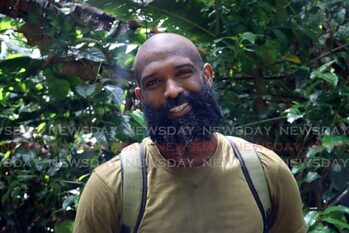 From a professional-sounding perspective, Nicholas Walker calls himself a conservationist and nature enthusiast. But in casual conversation, he is “just a man who likes the bush.” From fields to forests, the former national footballer is now on a mission to get more people interested in this country’s flora and fauna. Walker, 33, was raised in St Ann’s, Port of Spain, in a large family. He told Sunday Newsday he has always been surrounded by and in love with nature. “(As a child) I was exactly like I am now – probably worse. We grew up doing bush things, we had a farm and those kinds of things.” His childhood heroes were the legendary English broadcaster and biologist Sir David Attenborough and late Australian conservationist Steve Irwin. His eyes would be glued to the TV any time Animal Planet or Discovery Channel were on. He attended St Margaret’s Boys’ Anglican Primary School, then St Mary’s College. He then did a bachelor’s degree in sports management at the Fairleigh Dickinson University, New Jersey, US, graduating in 2014. It was there the defender played college football and later played professionally for MLS (Major League Soccer) team FC Dallas, among others. He has also played for TT’s national under-20 football team. But when his grandmother, Gloria Walker, fell ill, he decided to return home in 2018. She died two months after he got back. Admittedly, just before his return, he felt like he was “losing the connection to (his) roots.” He recalled his grandmother continually encouraging him. “She was my rock (and) the greatest matriarch you’d ever meet. She not only raised seven children but 20-30-something grandchildren, and without an education. Seeing that type of love was an inspiration.” So Walker returned to his happy place – nature. He said he got the opportunity to travel the world thanks to football, and “by doing that, I realised that TT has so many of the things (flora and fauna) you can see abroad. “It might be a different colour, but we have it.” He then felt mandated to urge others to “show some appreciation and encourage them (to explore TT) a bit more.” That, he concluded, is his purpose. “It’s the thing that came easy to me. “I think a lot of people have this idea that they need to chase after their purpose. For me, your purpose is the thing that comes easy to you.” The passion behind this purpose eventually led to his nature tour business, TTrodOn Tours And Experiences/Exploring TT. “I started taking friends and it moved from my friends to their family and friends. “I remember (tours) would be like $20 back then.” Living up to his surname, his preferred method of transport is walking – which he does barefoot. In fact, he once walked from Port of Spain to Maracas, and from Port of Spain to Grande Riviere, a fishing community along the northeastern coast. He now makes YouTube videos of places he hikes or explores with his friends Zakirayya Ali, Saifaudeen Mohammed and Sabrina Ali. In the videos, he gives fun facts about every animal or ecosystem he comes across in effort to educate. In what he described as “a chance of a lifetime,” he got the opportunity to assist the crew of the BBC docuseries Liz Bonnin's Wild Caribbean in November. The team was here to see the white-fronted capuchin monkey. Bonnin said there are only 50 mature adults left of this species in the world, and they're all in TT. Bonnin lived here for some time as she was born to a TT mother and her father, originally from Martinique, also lived here. Walker had visited the area they were exploring – Bush Bush Forest/Wildlife Sanctuary – a week earlier and posted videos about it. “So a week later, my friend’s mom was like, ‘Aye, these people from the BBC coming.’ Don’t ask me how (she knew) but she said it would be a good opportunity to go see what they do, that I could help them carry equipment…” So he went. But after several hours of trying, they still had not found the animal. “And at one point, I just took it upon myself and said I’d take the camera crew alone to the spot where we found our monkey.” He said the monkey is very skittish, so the large team would have lowered the chances of its coming out. “So I could hear a male making a call, and I started whistling back. He was coming closer, to see who is this other male (capuchin) in his territory. “You could see him coming through the branches, and he came straight to the camera, realised, ‘Wait, this is not a monkey,’ then took off.” He said a cameraman ran after the monkey, which paused for a drink of water, allowing him to get the perfect photo. “That experience just solidified my purpose in this space. When it comes to nature in TT, this is what I am supposed to be doing. I am trying to encourage (TT nationals) to learn their home and I think if you do, you can respect it a little more and appreciate it a little more. “You’d realise in my videos – you don’t really see people. I want to show TT’s nature, and the vibrance of what we have right here.” He recently came across the Suriname toad, which he said had not been recorded as seen in TT for at least 32 years, as well as the critically endangered golden tree frog. Sunday Newsday did a mini hike with Walker at the Bamboo Cathedral in Chaguaramas, which he insisted was not a hike but “a small stroll.” It was there he and the team saw a group of tufted capuchins, among smaller critters. But Walker credits a lot of his knowledge to the friends he goes on adventures with. “Yes, I know trees, I know animals, but I learnt from them. I always have to give credit where it is due. They actually have degrees in these things.” He also does wildlife photography and is known for taking impressive close-up shots of snakes. “If you sit in nature long enough, stories will start to unfold.” A dream of his has always been to work with Caribbean Airlines to have his work featured in some way. He said three weeks ago, the company “messaged (him) out of nowhere” saying they liked his work and wanted to send him to Dominica to do something similar. “Dominica has been the only place in the world I’ve wanted to go since I was 16, and I still had not been. It was an amazing experience and there was so much to see.” Although he has seen many animals, he is yet to see a (mapepire zanana) bushmaster ( Lachesis) snake – the largest venomous snake in the Americas – and an ocelot, but hopes he can achieve that soon. “Nature, in itself, just gives to us, and we are supposed to protect it.” (Source: Newsday Dec 16, 2023) Twinning Association president Dave Peters At first sight, Port of Spain and St Catharines, Ontario, couldn’t be more different. About 4,000 kms north of Port of Spain, St Catharines is frozen during winter, and even as the eighth largest urban area in the province of Ontario, dwarfs its “twin city” in area and population. What the two cities have in common, Philip Atteck – the Trinidadian responsible for twinning the two cities – once said, are the warmth and vibrancy of their people. St Catharines (frequently misspelt and wrongly given an apostrophe), is in the Niagara Region and is one of its least populous with about 140,000 residents. A sizeable minority include Caribbean migrants and generational migrants, who have found comfort in one of Canada’s many welcoming cities. The flag of Port of Spain was recently hoisted by St Catharines mayor Mat Siscoe, at St Catharines City Hall, to commemorate the 55th anniversary of the twinning, an arrangement formalised in 1968. Twinning began after World War II when Japan, led by survivors of the catastrophic Hiroshima bombings, reached out to several European countries and cities, and approached the UN with an idea to “mundialise,” (from the word French word mondial, meaning "global”), with an end goal to prevent such human-caused tragedies from recurring. About two decades later, in 1965, Richard Hilker, a manager at Air Canada, asked Atteck, sales manager for Radio Guardian, to tour Canada to promote the Caribbean as a tourist destination for Canadians. Atteck travelled across the country, and with the support of donations and promotional materials, led a successful campaign to boost the Caribbean’s visibility as a tourist destination. During his tour, Atteck visited St Catharines, and the idea of twinning St Catharines and Port of Spain was conceived. Twinning committees were formed, and the cities officially twinned in 1968, embracing the UN Charter of Human Rights. The arrangement was formalised in August, 1968 when Hamilton Holder, shortly after becoming mayor of Port of Spain, officially declared Port of Spain a “mundialised city.” St Catharines mayor Mackenzie Chown was in Trinidad for the ceremony and declared his support for the newly twinned cities. Holder pledged on behalf of Port of Spain residents to “observe and uphold the universal declaration of human rights by the UN,” and “to join the rest of the world in the pursuit of peace, justice and friendly co-operation.” From there, the St Catharines Twinning Association was established. Atteck, who has been credited as the inspiration for the popular tourist attraction Festival of Lights in Niagara Falls, and served as honorary chairman of the association, died in 2009. The twinning arrangement led to a number of benefits, including free surgical treatment for Trinidadian children in Toronto, and the Rotary Club of St Catharines outfitting an operating theatre in Port of Spain. Medical collaboration also occurred, with Canadian doctors working in Trinidad. The twinning fostered cultural exchanges, as people visited each other's cities and citizens from Port of Spain travelled to St Catharines for educational opportunities. Brock University facilitated field trips to Trinidad, and a scholarship was established in 1993 for a Trinidadian student at Brock. In 2008, Brock University established a full-tuition Twinning Scholarship for Trinidadian students, with several recipients graduating. A memorial for Atteck was placed at Brock University's International Building. Newsday spoke with the association’s president Dave Peters, who said although annual activities have been affected in the past few years because of the covid19 pandemic, they have returned in full swing to bring the best of Port of Spain culture to St Catharines to commemorate the 55th anniversary. Peters said there have been documented benefits of the linkage between the two cities. He referred to a letter written by a Canadian policeman, who visited and worked in Port of Spain for a month during the 1970s. The policeman wrote that he had learnt more about cultural sensitivity in race relations in one month in Port of Spain than he could ever be taught in any classroom. “So that was such a powerful experience to have that exchange and to be able to understand how the police in Port of Spain were handling the multicultural aspects (of the community)...” St Catharines is regarded as particularly significant in terms of Afro-Canadian history. Executive members of the St Catharines Twinning Association's Port of Spain executive flank St Catharines mayor Mat Siscoe during the recent 55-year anniversary celebrations. - American abolitionist Harriet Tubman lived there in the late 1850s, having led her family to a community of formerly enslaved people, including some of her other relatives. Tubman led many enslaved people to a church called Salem Chapel in St Catharines after the passing of the 1850 Fugitive Slave Act, which allowed for the capture and return of enslaved people to their “masters” within US territories. The church still stands and has been designated a historical landmark by the Canadian government.
Today, the city and the wider region are regarded as particularly open to migration and diversity, and are home to a significant Caribbean minority. Apart from the more formal arrangements, the association and its members routinely organise social events, such as cultural shows, pop-up markets and seasonal events. It only has some 65 formal members, but includes many non-members in its activities. Peters said the association is always open to new members. High on the agenda is its Parang in Niagara 2023, scheduled for December, a mini-festival of music, food, shopping and other activities. (Source: Newsday, October 17, 2023) Herman Gajadhar holding a photograph of his younger self The children attending Cunaripo Presbyterian Primary School in the 1930s had a rainy season problem. To get to classes meant walking many kilometres from the surrounding villages of Howson, Jaraysingh, Cheeyou, Nestor and Hassanali, places south of Sangre Grande that you may never have heard about. Back then, every road in these villages of rice and cocoa, coffee and tonka bean was a muddy mess. So the boys would wash their shoes at a well near the entrance to the hilltop school, while the girls cleaned theirs at a trough on the compound, before daring to step into the headmaster’s building. Infant Herman Gajadhar had no such problem. Because he owned no shoes. Gajadhar told us this story over a few beers at his home in Guaico, this week. He is now 95 years old, with a perfectly intact memory, and up to a week ago, was driving around Sangre Grande, slowly, and probably causing a traffic jam. Gajadhar was born into a family of 11 siblings, his parents, rice planters and cocoa farmers, living in the lowlands in Cunaripo. They were Hindus, one generation out of indentureship, but the Canadian Mission to the Indians (CMI) opened its school nearby, and education meant a chance to avoid a life as a lagoon or plantation labourer. Gajadhar said: “My father was a good gardener. My mother remained home to cook for us. But one thing, they made sure all of us went to that school. And in those days, the best job you could get was to be a teacher, or otherwise, it was working the riceland or with your father in the estate. But he made sure I got my education, so I didn’t have to do this all my life.” He did not squander the chance at school. Gajadhar was identified as a high performer and chosen for the pupil/teacher system where he assisted in teaching classes while supervised and monitored by the schoolmaster. He was 14 years old when he was paid his first salary of $12 a month. With it, he bought his first pair of shoes, the rubber-soled, canvas upper “washikong”. Gajadhar wrote yearly exams, which qualified him to attend the Naparima Teacher Training College in San Fernando, and by age 18 was an accredited teacher, working for a $20-a-month salary. His first assignment was a return to Cunaripo Primary School, before teaching stints at Fishing Pond, Sangre Chiquito and Plum Mitan Presbyterian schools. This was 1940s and ’50s Sangre Grande, and life was far different. The Trinidad Government Railway connected this East Trinidad town to Port of Spain, Siparia and Rio Claro, but you had your entertainment right here within bicycle distance. Your alcohol and lime was at Uncle Sam Bar. And there was the “theatre” of Samuel Juteram, the rags-to-riches owner of the Apollo Cinema, where Gajadhar went on a Friday to see the Indian films, and on a Sunday for the Hollywood movies, always in the “pit” where a seat cost 12 cents. Who needed the rest of the island, said Gajadhar, when you had your beaches, past the swamplands in Fishing Pond Village, or in Bande de L’Est where you could catch crab and make a cook at night, in the schoolyard on a weekend. Meeting place: Gajadhar’s liming spot in Sangre Grande—Uncle Sam Bar. And especially since you had liming partners like Isaiah James Boodhoo (1935-2004), who also started as a CMI pupil/teacher, but would go on to become one of the region’s critically acclaimed artists. Long before that, Boodhoo was the leading “girls man” in the town, with the gift of gab, good at cricket, cards and everything else. Gajadhar would be tamed in his 30s when he married a reverend’s daughter, Elodie, and settled down to father two sons, Trevor and Addison, and teach countless children at Guaico Primary School over a decade. He would qualify to teach at the secondary school level, and older people along the Atlantic Coast may remember him at schools in Rio Claro, Manzanilla and Guayaguayare where he taught the subject principles of business (POB). It also appears he employed these business principles because he started investing in real estate, taking loans and buying land cheap, and reselling when the price increased. Meanwhile, he became a respected elder at the Morton Memorial Presbyterian Church where his wife was secretary and singer. That school closed about ten years ago. In 2021, he gave a video-recorded interview where he told about his volleyball talents, wedding sermons, the need to bring back the church harvests and village councils, and how sometimes an entire train carriage was filled with Presbyterians going to Arima or San Fernando. After his retirement, Gajadhar opened a private secondary school in Sangre Grande where accounting, shorthand and typing were taught. His wife was a teacher, and he the principal. He also let us know that he wrote his own book, A Secretary’s Companion. flashback, 2001: Herman Gajadhar. —Photo: Morton Memorial Presbyterian Church Two years ago, Gajadhar’s wife died at age 86. One son is in Canada. The other settled in the home village of Cunaripo.
So Gajadhar now spends his time in a comfortable armchair, near a cabinet filled with sporting trophies, school and long-service awards, being visited by church friends and neighbours. On the wall across from him is a framed painting given to him by his friend Isaiah. He said: “I like to watch that picture. It brings back all the good memories.” (Source: Richard Charan, Sunday Express, September 21, 2023) Born Ebenezer Elliot, he was more popularly known a Papa Neezer or Neza. He was a direct descendent of original Merikin settlers George Elliot, on his father’s side, and George Blackwell, on his mother’s side, His parents arrived in Trinidad as "merikins" immigrants and settled in Moruga as free slaves from America.
Born of African American descent, Ebenezar attended the village primary school in Moruga up to seventh standard. He was raised a London Baptist in the Church in the Fifth Company Village, and he remained a devout Baptist and a conscientious Christian all his life. He had a special liking for Shango religion (many worshipers prefer the name Orisha.) , and became an accomplished drummer and adherent to the religion and eventually became an accomplished leader of the religion. Ebenezar was a family man, who was sociable, charitable, very approachable and because he established undying friendships and acquaintances, he became known as ‘Papa’ or ‘father’.Papa Neezar was 32-years-old when in a dream it was revealed to him that he had special healing powers to cure the sick and cast out evil spirits. Legend has it that while asleep in his garden one night a snake passed over him causing him no harm. He interpreted this as being bestowed with spiritual powers to give guidance to others for life issues and problems. Described as a dynamic person, he was well known for his prophecies using the ‘Obi Seed’ and bible passages (especially the Psalms) which he would use according to his revelations. All his ceremonies and rituals in the various manifestations of his spiritual powers began with paying homage to his ancestors.To Papa Neezar and his Orisha-worshiping followers ritual sacrifice was an important part of their beliefs and practices Animals, particularly chickens and goats, was often offered as sacrifices in situations such as serious illness or misfortune.After performing the rituals the meat from the sacrificed animals would then be cooked and distributed to the villagers. Fruits and vegetables are used frequently and are pleasing to the particular Orisha spirits. Papa Neezar did much to promote his religion and was very influential in the construction of a modern church in his community. According to Ms. Leonis Roberts, his granddaughter, he was not an Obeah man, but a helper and healer. "Obeah" she said “is not about doing bad from the long-time point of view but it was about helping people. He never took money, was not about the money." Papa Neezar fell ill and died at the San Fernando General Hospital on January 8, 1969.He was buried at the Third Company Baptist Church cemetery in Lengua. Long after his death historians discovered a turine (a large jar for mixing concoctions), morocoy shell, flambeaux, various sizes of clay bottles, a large black Bible, a corn mill and several items that can be found in an alchemist shop. In Moruga his name is still revered as a man of spiritual powers. |
T&T news blogThe intent of this blog is to bring some news from home and other fun items. If you enjoy what you read, please leave us a comment.. Archives
February 2025
Categories
All
|
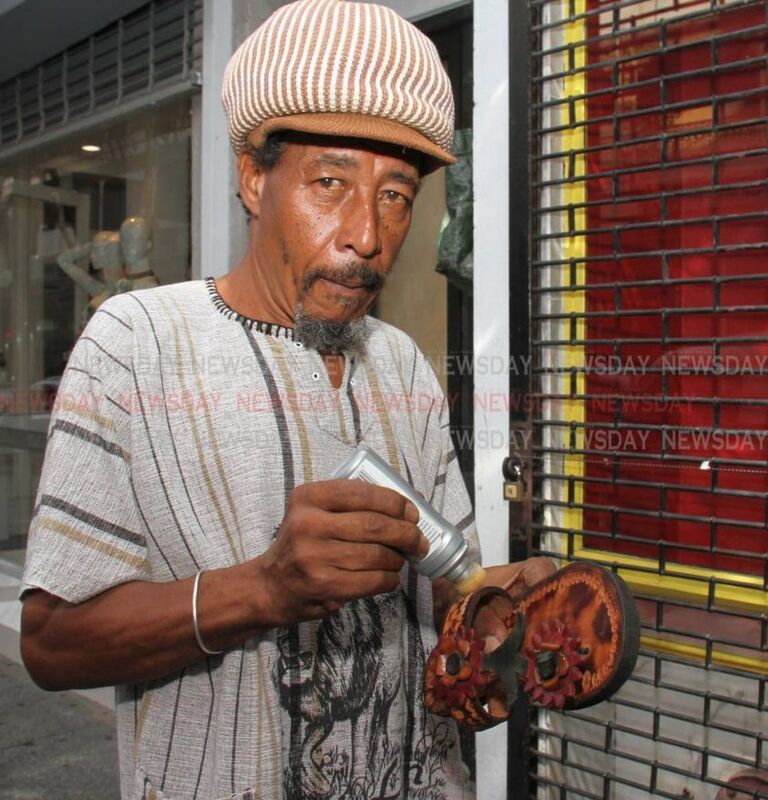

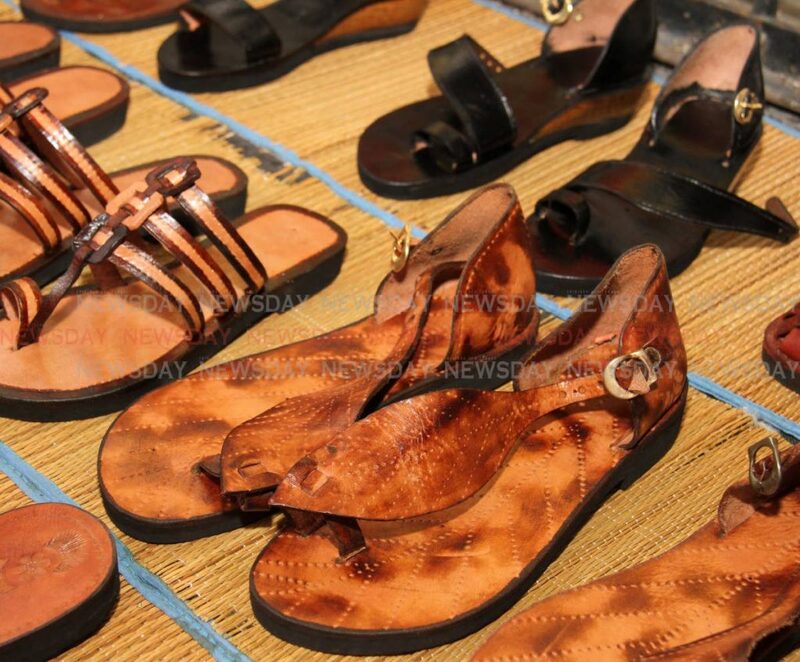

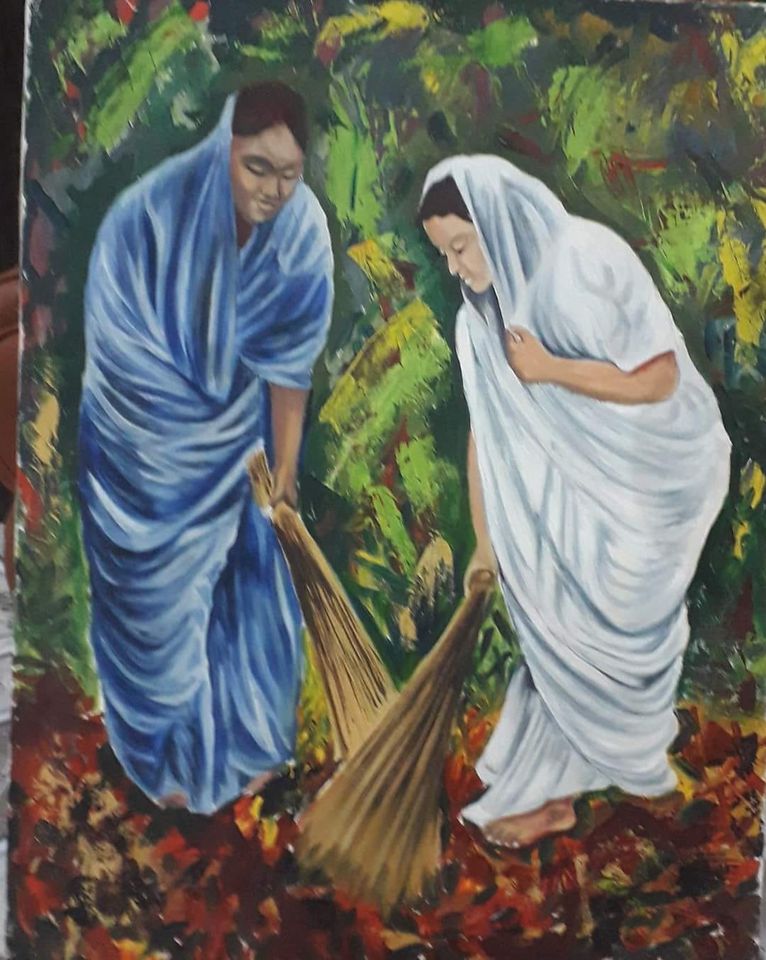
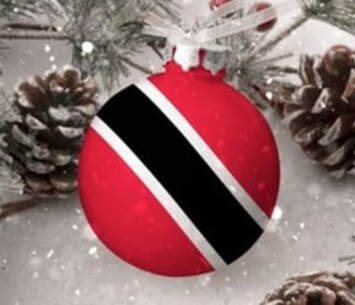

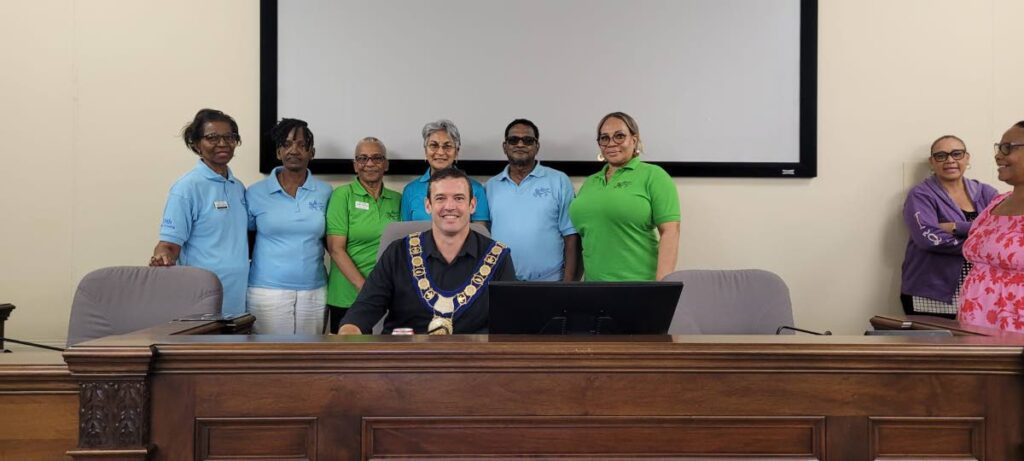

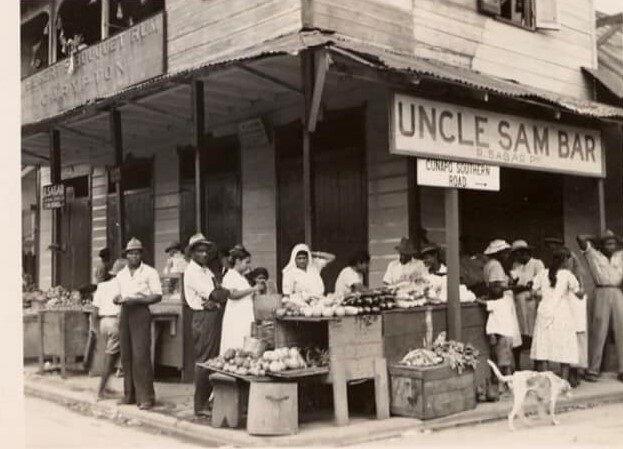

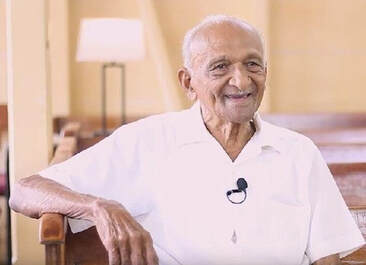
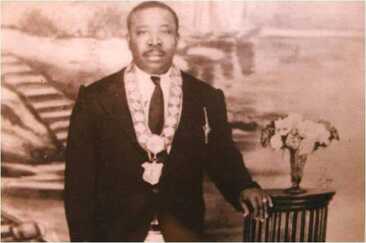
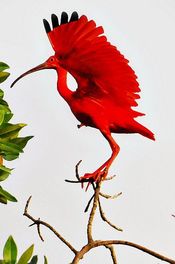
 RSS Feed
RSS Feed